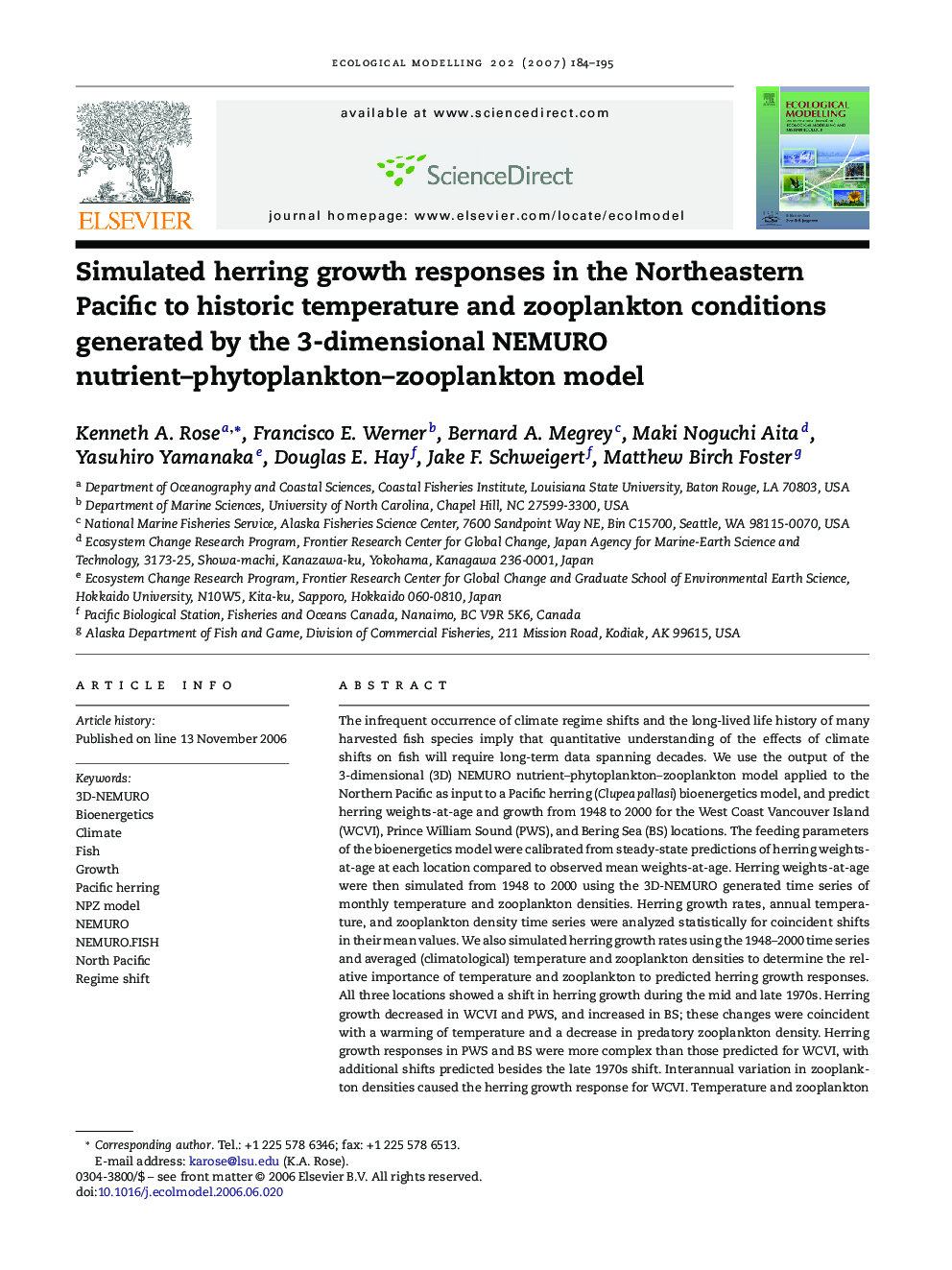| Article ID | Journal | Published Year | Pages | File Type |
|---|---|---|---|---|
| 4378744 | Ecological Modelling | 2007 | 12 Pages |
Abstract
The infrequent occurrence of climate regime shifts and the long-lived life history of many harvested fish species imply that quantitative understanding of the effects of climate shifts on fish will require long-term data spanning decades. We use the output of the 3-dimensional (3D) NEMURO nutrient-phytoplankton-zooplankton model applied to the Northern Pacific as input to a Pacific herring (Clupea pallasi) bioenergetics model, and predict herring weights-at-age and growth from 1948 to 2000 for the West Coast Vancouver Island (WCVI), Prince William Sound (PWS), and Bering Sea (BS) locations. The feeding parameters of the bioenergetics model were calibrated from steady-state predictions of herring weights-at-age at each location compared to observed mean weights-at-age. Herring weights-at-age were then simulated from 1948 to 2000 using the 3D-NEMURO generated time series of monthly temperature and zooplankton densities. Herring growth rates, annual temperature, and zooplankton density time series were analyzed statistically for coincident shifts in their mean values. We also simulated herring growth rates using the 1948-2000 time series and averaged (climatological) temperature and zooplankton densities to determine the relative importance of temperature and zooplankton to predicted herring growth responses. All three locations showed a shift in herring growth during the mid and late 1970s. Herring growth decreased in WCVI and PWS, and increased in BS; these changes were coincident with a warming of temperature and a decrease in predatory zooplankton density. Herring growth responses in PWS and BS were more complex than those predicted for WCVI, with additional shifts predicted besides the late 1970s shift. Interannual variation in zooplankton densities caused the herring growth response for WCVI. Temperature and zooplankton densities affected the herring growth responses in both Alaskan locations, with zooplankton dominating the response for PWS and temperature dominating the response for BS. We compare our simulated herring growth responses to observed responses, and discuss the advantages and drawbacks of using the output of broadly applied lower trophic model as input to fish models in order to examine long-term responses to regime shifts at multiple locations.
Keywords
Related Topics
Life Sciences
Agricultural and Biological Sciences
Ecology, Evolution, Behavior and Systematics
Authors
Kenneth A. Rose, Francisco E. Werner, Bernard A. Megrey, Maki Noguchi Aita, Yasuhiro Yamanaka, Douglas E. Hay, Jake F. Schweigert, Matthew Birch Foster,
